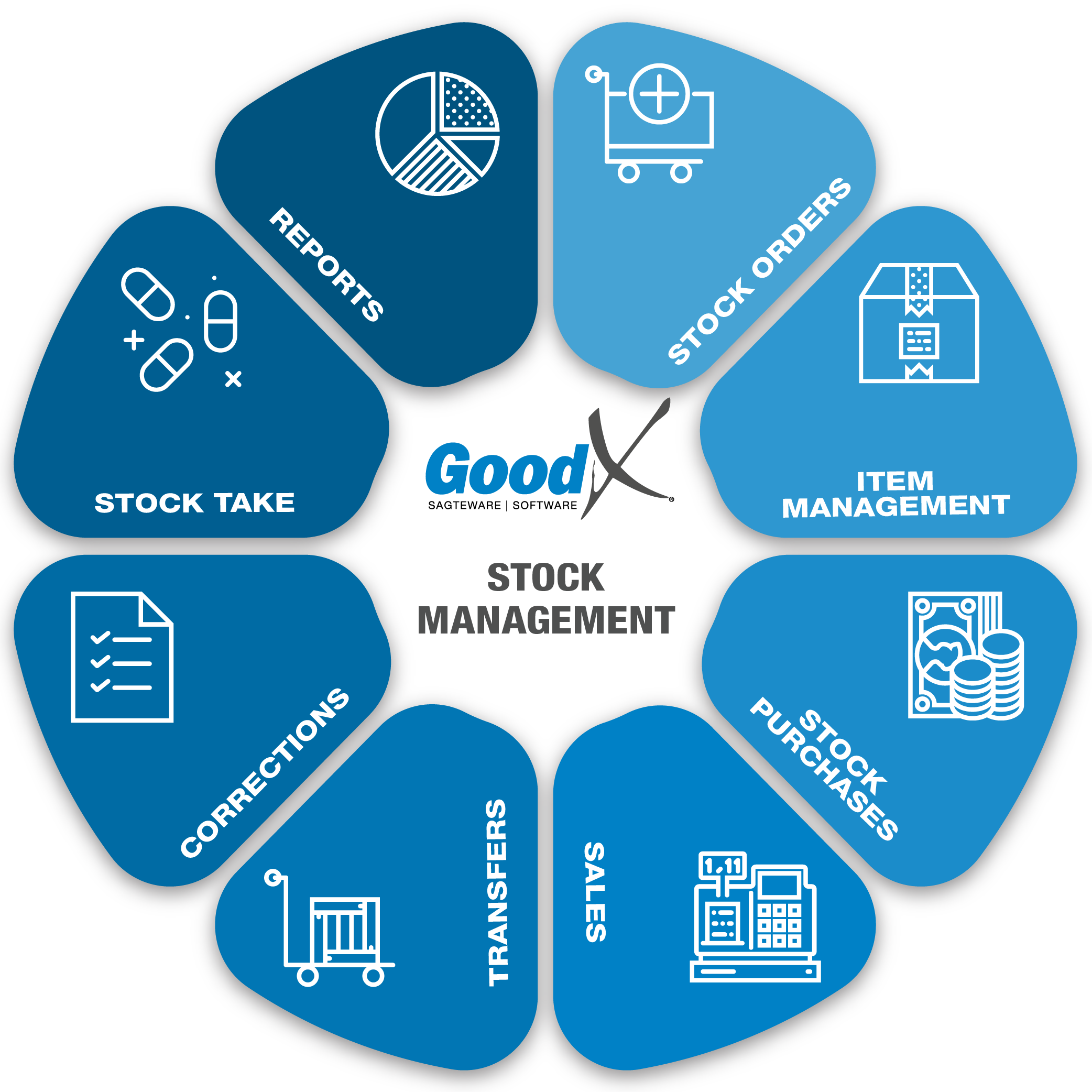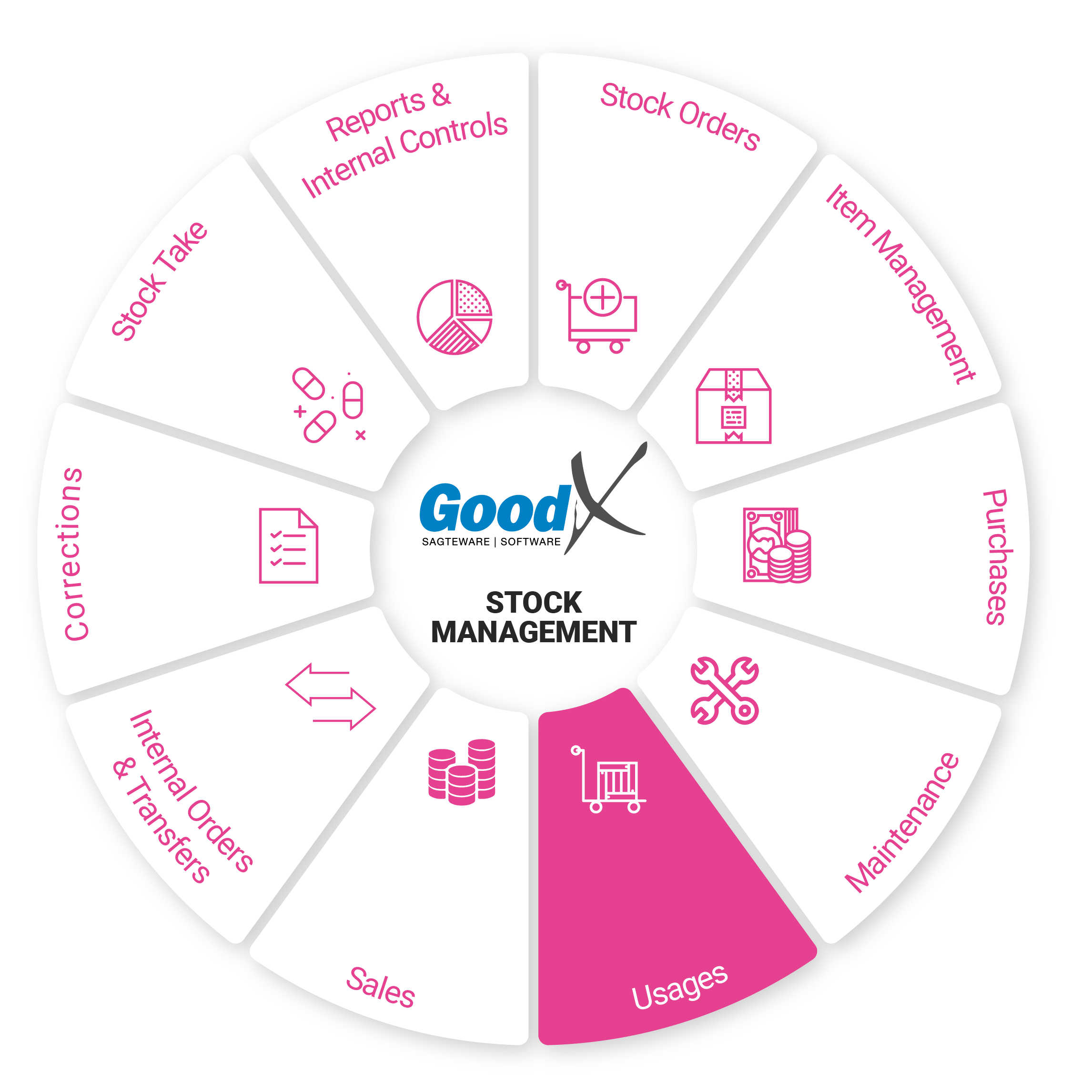Best Practice Guidelines: Stock Management 28/06/2024 (In development)

Copyright © 2020 GoodX Software. All rights reserved.
GoodX online Learning Centre
learning.goodx.co.za
7. Summary: Usages
7.1. Usages
Responsible Roles
 |
Financial Manager: Xxx |
|---|---|
|
|
Stock Clerk: Xxx |
|
|
Stock Controller: Xxx |
 |
Practitioner: Xxx |
 |
Kitchen Manager: Xxx |
 |
Warehouse Manager: Xxx |
 Critical Steps of Usages
Critical Steps of Usages
Effective management of medical stock usage is crucial in healthcare settings to ensure the availability of essential supplies while minimising waste and cost. Unlike selling items, the focus here is on the efficient utilisation of stock to support patient care and operational needs.
Capturing the usage of non-sold medical stock items is vital for effective healthcare operations. It ensures that healthcare providers maintain accurate records of supplies like disposable instruments, and consumables, which are essential for patient care but not sold. Accurate usage tracking allows for precise inventory management, reducing the risk of stockouts or overstocking. This helps in maintaining the availability of critical supplies, ensuring they are always on hand when needed, and avoiding delays in patient treatment.
Tracking usage also supports financial management by providing data on consumption patterns, enabling healthcare facilities to forecast demand more accurately and budget effectively. It helps identify trends and potential areas of waste, allowing for the implementation of cost-saving measures and more efficient resource allocation. This can lead to significant cost reductions, which is crucial in an environment where healthcare costs are continually rising.
An example of this stock item is reagents. In medical practice, the usage of reagents is critical for accurate diagnostic testing and research. Reagents are chemicals or compounds used in various assays to detect, measure, or analyse the presence of substances in patient samples. Their proper utilisation ensures the reliability of test results, directly impacting patient diagnoses and treatment plans. Efficient management of reagent usage involves tracking their consumption, shelf life, and storage conditions. This helps prevent wastage and ensures that reagents are available and effective when needed.
Regular monitoring of reagent usage also aids in maintaining quality control, as it allows for the timely reordering and replacement of depleted or expired reagents. This is essential for the consistency and accuracy of laboratory results. Furthermore, keeping detailed records of reagent usage supports compliance with regulatory standards and can facilitate troubleshooting in case of unexpected test results, thereby upholding the integrity of medical diagnostics and research.
In short, any items used for testing but not sold to patients should have their usage captured in an inventory system. This practice ensures accurate allocation of costs to the correct expense accounts and helps maintain records for timely reordering.
There are two scenarios to capture the usage of medical items in a practice:
1. Items Used on the Patient: When an item is used on a patient, it can be billed as non-chargeable. This means that the item’s quantity will decrease in inventory, and the patient’s account will reflect that the item was used. However, the billed amount will be zero, so it won't impact the overall balance of the patient’s account. Items posted to a debtor or patient account will automatically post the cost of sales to the correct ledger accounts.
2. Items Used in the Practice: For items used within the practice, such as sterilising products, you can create a non-debtor account. These items can be billed against the practice’s debtor account with a zero amount, because the item is set up as a Non-chargeable, or you can adjust the inventory with a stock adjustment. This adjustment will be posted directly to a company expense ledger account and reduce the stock levels accordingly.

